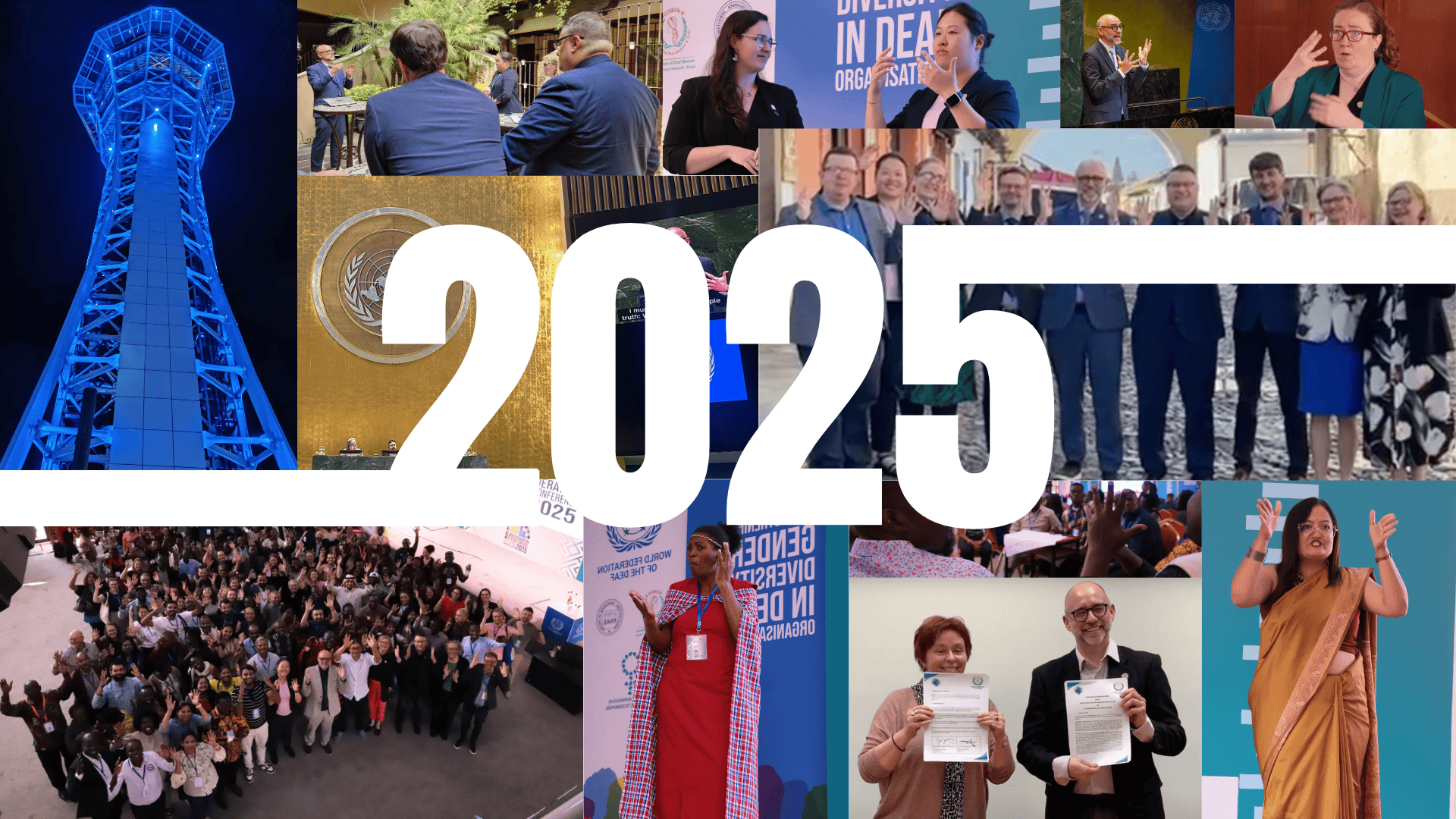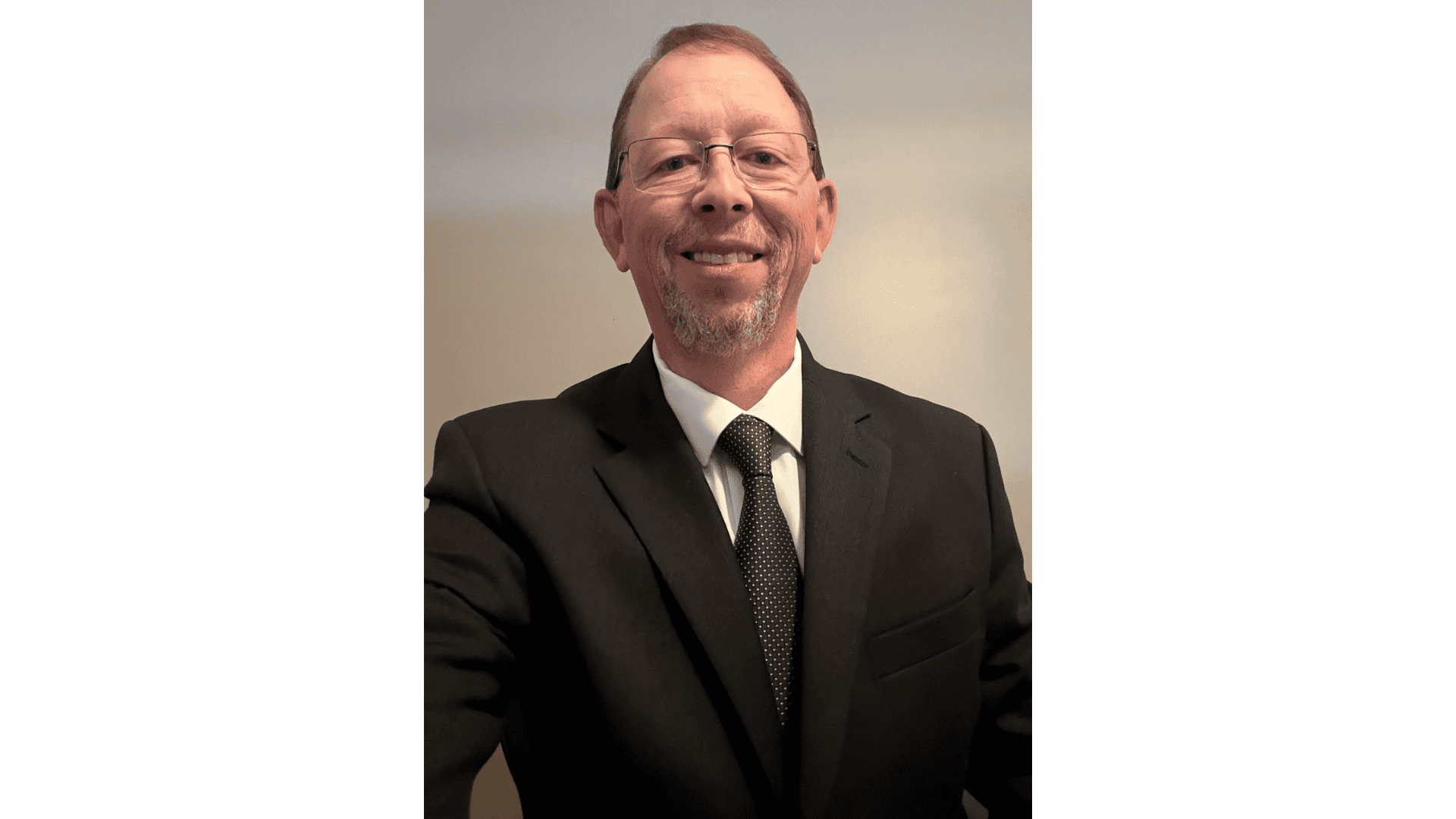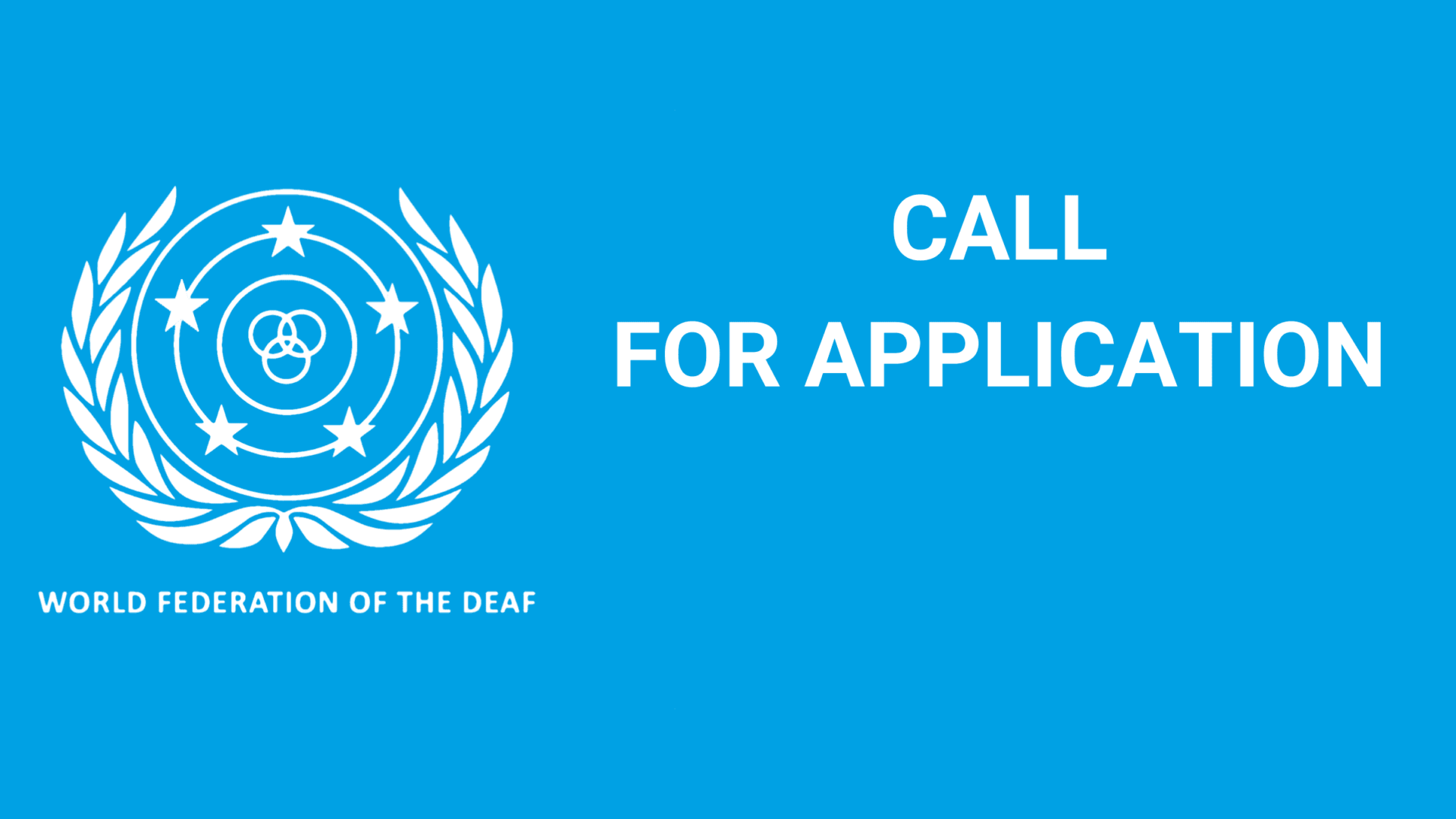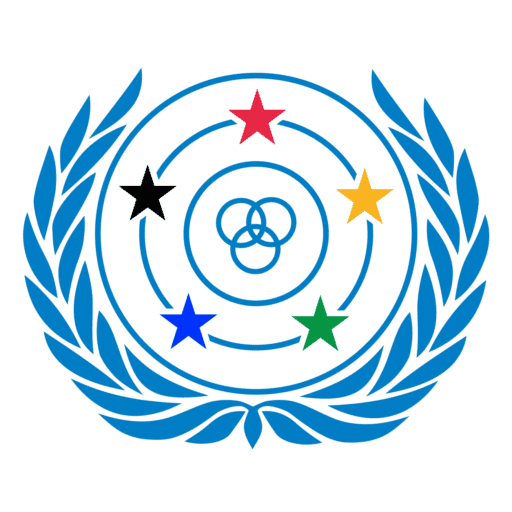The World Federation of the Deaf is concerned about attempts to “standardize” sign languages in some countries. Often, language standardisation takes the form of deciding on one single word or one sign for a concept and as a result, the natural variation of the language is ignored.
The United Nations Convention on the Rights of Persons with Disabilities (CRPD) article 21 (e) obliges states parties to recognize and promote the use of sign languages. In the spirit of the CRPD, sign languages should be promoted in the form that they are used by Deaf Communities around the world.
Some researchers or organisations around the world have attempted to standardize sign languages by producing dictionaries which only have one sign for one concept and ignoring the other variations of the sign or concept. This is an incorrect approach because this does not reflect how natural languages have variation. Also, these resources are then used to teach sign language, train interpreters, or to serve as a record of the language, and these do not reflect the natural richness and variation that is present in sign languages. It is possible that such an activity will in the long term alienate or disenfranchise language communities.
It is important to highlight that sign languages are full-fledged natural languages, structurally independent from the spoken languages with which they co-exist; they are certainly in contact with these spoken languages but their structure is different and independent.
Some people believe that there should only be one sign for one word or one concept, which is wrong both from an everyday, lay and from an academic perspective. It is important to note that spoken languages do not have one word for one concept either (for example, in English truck/lorry, elevator/lift)
Sign languages are like spoken languages in that there is a great deal of sociolinguistic variation (Lucas and Valli 1992 and Lucas, Bayley, and Valli 2001). This variation can be:
- regional (where people live in a specific country),
- age (older people and younger people),
- gender (men and women),
- education (how a person was educated)
- family background (whether there are Deaf members of the family or not),
- social (networks a person is in contact with)
- ethnicity (where a person comes from), and
- register (different situations eg formal, informal, etc).
- lexical (different ways of saying the same thing).
All languages of course allow for the same thing to be said in different words/signs. Variation is a natural feature of both sign languages and spoken languages, and this is an important part of any language research.
Further background on the WFD Statement on Sign Language Work can be seen here.
This Statement emphasises that it is important for sign language work to be done with leadership of Deaf native sign language users and WFD Ordinary members; it is important also to note that the UN Convention on the Rights of Persons with Disabilities requires governments to ensure that people with disability can express themselves freely, including in sign language. The WFD believes that any sign language work should reflect all the different signs used by a language community. Therefore, sign language dictionary work should always document all the different signs and their variations that deaf people in a community or area use. It is not advisable to pick only one sign for one word when documenting sign languages. The WFD therefore does not support any formal standardization activities related to any sign language, but supports appropriately qualified linguistic research into and documentation of all sign languages in the world.
The WFD Statement on the Unification of Sign Languages can also be seen here which notes negative language standardization practices such as:
- replacing old sign languages with a ‘better’ sign languages
- unifying several sign languages to a single sign language or
- deleting foreign signs from Sign Languages, all of which are not supported by the WFD.
For general further information on sign languages see here which has some suggested readings.




